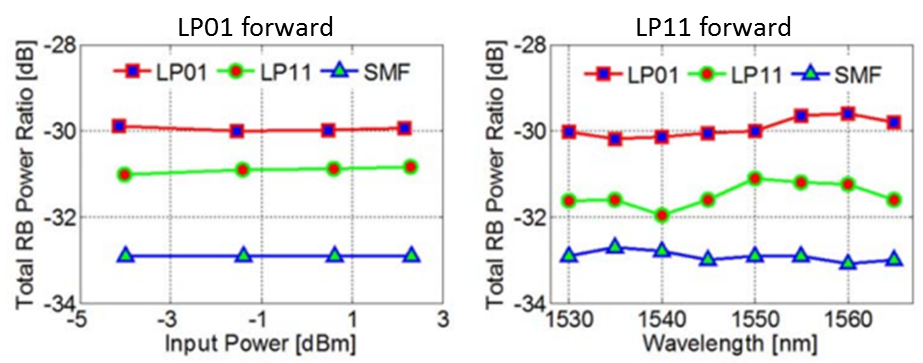Themode division multiplexing (MDM) based on few-modefiber (FMF) is a promising candidate which can overcome the capacity crunch of SMF. However,the mode coupling property increases the complexity of multi-input-multi-output (MIMO) digital signal processing (DSP). The two LP11 modes with orthogonal orientation are degenerated and easy to couple to each other due to the similar propagation constants. Considering the polarization division multiplexing (PDM) technique, at least 4×4 MIMO-DSP is needed. Moreover, the mode coupling leads to the mode field variation along the FMF, limiting the application in access network. Therefore, the optimization of specialty FMF design is a meaningful topic to be investigated.
Prof. Songnian Fu, Prof. Ming Tang, Ph.D student Junpeng Liang and Dawei Yu with the Wuhan National Lab for Optoelectronics, Huazhong University of Science and Technologyinvestigated the design, characteristics and application of FMF recently. The core is designed into an elliptical shape which can successfully break the degeneracy of the two LP11 modes with orthogonal orientations by increasing the mode effective refractive index. The ellipticity of smaller than 0.264 is enough for mitigating the coupling between the spatial modes. Therefore, only three 2×2 MIMO DSP is needed. The weak coupling property guarantees the LP11 mode profile stability when propagating along the FMF.Thus the temperature-insensitive fiber twist sensor is developed based on the elliptical-core FMF, showing a sensitivity of larger than 20μW/°.


Fig.1Elliptical-core FMF and corresponding twist sensor

Fig. 2The efficiency of Rayleigh backscattering light in the FM
The Rayleigh backscattering (RB) in FMF is also experimentally investigated. It is found that the RB light exist in every guided mode with individual proportion. The results are meaningful in the FMF-based access network when it comes to mitigate the impact of RB for the upstream signals.
These papers were published at Optics Letters (Vol.13, No. 13, pp. 3058-3061, 2016和Vol.41, No. 20, pp. 4617-4620, 2016) and Optics Express (Vol. 24,No.11, pp. 12192-12201, 2016), andthese work were supported in part by the National Basic Research Program of China(863Program: 2013AA013402) and theNational Natural Science Foundation of China (61275068, 61331010).